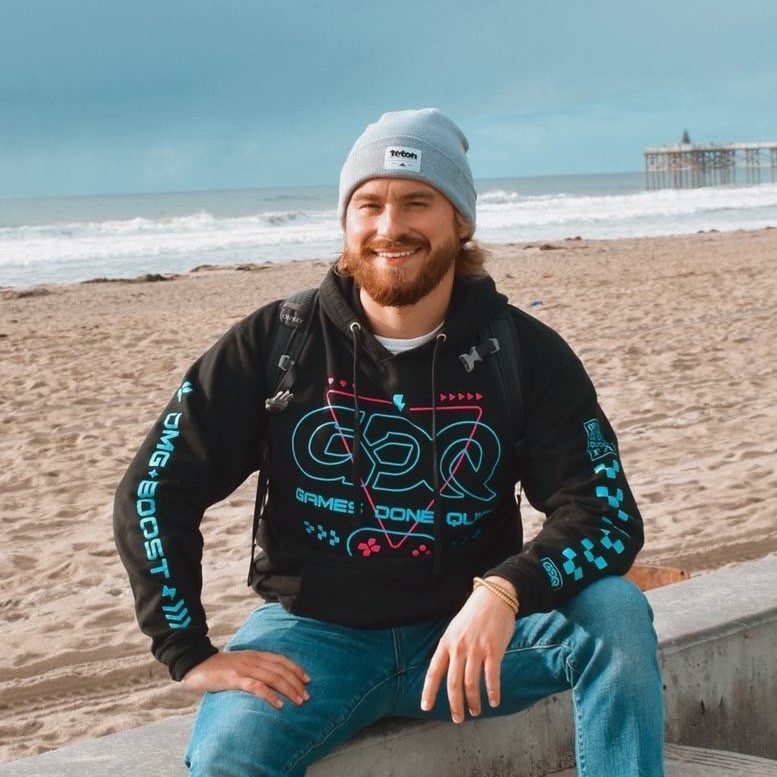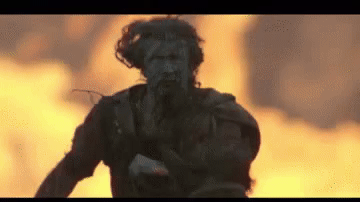Jake Wallace

Grandpa Dude and the Demon of Freedom: Reclaiming My Scottish Soul
March 31st, 2025
Introduction
I speak a lineage written in names: John, Bruce, Nicholas Jesse… names shared between father and son, uncle and nephew. In my brother John I hear an ancient namesake—Sir John Wallace’s blood calling out to us. In Uncle Bruce, the name of the Bruce lives on, a steady drumbeat of courage. And through my father Nicholas Jesse and his namesake, my cousin Nicholas Jesse II, I witness a name passed like a torch from one generation to the next. Together, these names form the opening chord of my family’s saga, ringing with reverence, rebellion, and freedom.
My paternal grandfather, James Eldon Wallace—known as “Jim” to friends, “Dude” to his sons, and “Grandpa Dude” to us, his grandsons—was a devoted scholar to our family lineage.
As I came to find out later in life, James “Grandpa Dude” Wallace, with whom my middle name, James, is named after—worked hand-in-hand with the Family Tree Center of The Church of Jesus Christ of Latter-day Saints to diligently track our family’s paternal heritage.
On Blood & Fire
As it was truly all men who dominated my father’s side of the family, my grandfather, father, and uncle helped to raise the three boys in the family between my brother, my cousin, and myself—through the strategy of blood & fire, if you will.
Not that there was any physical violence, but there was a lot of harsh, cold, and tough love shown to us three boys growing up from the men in the family. Though, this did have its pros.
For one, starting at the age of three, I was initiated into the blood & fire of our so-called distant ancestor’s, Sir William Wallace’s legendary tales of leading the Scottish Rebellion against King “Longshanks” Edward I’s English Throne by allowing us to watch the academy award-winning, Braveheart—a film both starred in and directed by Mel Gibson.
If you haven’t seen the movie or need a refresher on the plot—the movie tracks the legendary Guardian of Scotland, Sir William Wallace and the time when England was ruling over the Scottish lands. The Scottish people were free-spirited and fiercly loving—loyal not to crowns, but to kin and the land itself.
Things were mostly fine until King Edward I came into power. Edward’s silly little nickname “Longshanks” is how I know him, but he had another terrifying nickname as he was known as the “Hammer of the Scots.”
Of Empire & Reflection
England has often perceived itself through its storied history as the most “civilized” of cultures, and Longshanks was determined to rule over Scotland—a country he deemed as inhabited by uncivilized indigenous peoples that needed to be slain and quarantined into various parts of their land so England could have total dominion over them.
A funny line in the movie that my family often quotes is when Edward I says, “The problem with Scotland is… it’s full of Scots!” 😂
This perception of the savage “outsiders” can be rhymically seen through the tactics and strategies of the British Empire throughout its storied history.
One example is when they came to the Americas, the Native Americans were also seen as savages. And yet, similar to the Scots of the 1200’s, the Native Americans of the 1500’s were an enlightened people. So while the English came over to the Americas carrying their unhealed wounds, they projected their own fears and hate onto the “others” which was Divinely Reflected back to the English in the faces of the Native Americans.
Like the Scots, the Native Americans had no choice but to be the very demons the English perceived them to be.
“Freedom runs in our veins…”
By contrast, when the Spanish conquered the Aztecs and neighboring Mesoamerican Empires of present-day Mexico, and once the Aztec and sister-Mayan civilizations were defeated, the Spanish and Aztecs swapped women and they mixed—becoming one people. What we know today as Mexicans—an open, warm, faith-filled, heart-centered, family-focused people with deep connections to both Mayan and Spanish bloodlines—in most cases.
However, a mix between English blood and Native American blood is a rare sight to see. As the English (and eventually the “White Americans”) slaughtered the Native-American tribes and ushered them into corners of the American lands deemed as “Indian Reservations.”
Both the Surrender of Geronimo and The Trail of Tears are tragic and traumatic bloodstains in the history books of the English-American conquest over the Native American indigenous peoples.
The truth is—neither the Scots nor the Native Americans were “savage others,” they were simply enlightened indigenous peoples who naturally reflected the projections of outsiders.
It was the English’s fear and demonization of “the other” that transformed these enlightened tribesmen and warriors into true demons in their uninitiated English minds.
Celtic Thrones: The Cycle of the Kings
Scotland and England, while close in proximity—had very different cultures. Yes, maybe Scotland was full of wild men and women, but they liked it this way. As they could truly live, express themselves, and most importantly to them, be free.
Not to mention, the ancient civilization blueprint of the indigenous Celtic-Scots is absolutely fascinating.
While Native Americans had Chieftains and Tribes—Celtic-Scots had Kings and Kingdoms. The Kingdoms were very similarly in structure to Native American Tribes, the only difference were that Kingdoms were established on top of the rolling hills of the Scottish Highlands. This meant that the Kings had a solid foundation for forming good governance over their Kingdoms—and, as a result, Celtic-Scottish Kingdoms were much larger than that of Native American Tribes.
The Celtic religion and faith system equipped the Scots with Oracle-like guidance from Celtic Druids who were well versed in Earth Magic—inscribing runes and had atonement with the ley-lines of the lands as seen in archeological dig sites where Celtic Runes and Stone Ordinances were seemingly Divinely Designed, Constructed, and Placed.
“The Dream of the Highlands has not died…”
In addition to this, the coronation of “Kings” was quite the ritual.
Not by blood, but by merit—only the most noble of the Scots were deemed worthy of being christened “Kings” as seen in the lore of the Stone of Scone—or the Stone of Destiny—which is also known as Jacob’s Pillow Stone. The same Stone King Charles III was christened with at the Edinburgh Castle in Edinburgh, Scotland back in 2022 after Queen Elizabeth passed away.
The legend behind this Sacred Stone is that it was the Stone that Jacob, the Father of the Tribe of Israel, laid his head upon when he had the dream of the infamous “Jacob’s Ladder.”
In this Dream, Jacob saw a Ladder streaming from the Heavens where Angels had access to and from the Earthly Realm—to come and go as they please—and be among us mortal men.
“The line is not broken—it is waking.”
Sir William Wallace & King Robert the Bruce
Now—to get back to my so-called great ancestor, Sir William Wallace. The core plot surrounding the movie Braveheart is that to have total dominion and control over Scotland, King Edward I enacted an abhorrently-illegal law known as prima nocta.
If you’re familiar with the movie, you’ll know this is how our hero, William Wallace was born in the flames.
Prima nocta meant that before a newly married Scotsman could sleep with his wife, an English soldier had to deflower her. Yuck! Longshanks—that absolute bastard!
Knowing prima nocta was an abhorrently illegal law, William decided to marry his wife in secret—having a marriage ceremony in a hidden forest tucked away behind the Scottish rolling hills.
But the winds of fate turned bitter. The English discovered this secret union and promptly killed his wife and burned her at the stake.
“And so the blood remembers…”
Thus, a hero, a legend, but perhaps more precisely, a Demon was born that day—Sir William Wallace, Guardian of Scotland and leader of the Scottish Rebellion against the English.

If you would like Hollywood’s take on the legendary Scottish Rebellion against the English that transpired from the 1200s through the 1300s—please see Mel Gibson’s Braveheart and follow it up with Netflix’s Outlaw King.
Outlaw King tracks the events of King Robert the Bruce picking up the torch after Sir William Wallace was captured, gutted, disemboweled, crucified and killed—famously declining to swear allegiance to the English Throne and instead swearing allegiance to “Freedom!” and freedom, alone.
Both William and the Bruce were truly, Brave Hearts.
The Descent into Ancestral Flame
As I’ve been on my own unique mytho-heroic Odyssey in my short lifetime thus far—I have always been drawn to my Celtic-Scottish roots.
Grandpa Dude always told the three of us Wallace boys that we were related to William Wallace. Yet, even as children—this was hard to believe. Like Jesus, I wondered—was William a real person? Or was he merely just a legend?
My heroic journey took me to Salt Lake City, Utah as I was visiting for a men’s retreat there back in October of 2022. As I arrived early and having never been to Salt Lake before, I was so curious to see the Mormon mothership temple—the Salt Lake Temple.
Upon visiting, I came across The Family Tree Center—and my curious mind obliged. How far back have the Mormons been able to trace my paternal line?
A sweet Mormon man at the Center was happy to help me log on to a computer there and guide me through the process of traversing my family tree. I told him I was interested in tracing my paternal line, so once we put in my father’s information, it was easy to find his parents as well: Grandpa Dude and Grammy—my beloved grandmother, Mary Wallace.
Once my paternal grandparents were identified in the system, the tree started to light up. I immediately go three generations back, then four generations back. I eventually get to seven generations back and that sweet Mormon man informed me, “this is typically when you’ll hit a dead end as it’s hard to trace family lines longer than seven generations.”
And yet, the tree continued to light up. Eight generations. Nine generations. Ten generations. Eleven generations… TWELVE generations.
The Mormon man’s mind was blown. “I have never seen this in my entire life working here at The Family Tree Center!”
Eventually the “Wallace” name became cryptic as it morphed into its Middle-English variant.
And then, through digital roots and ancient echos—there he was, my great, great (…add a few more greats!) grandfather, Sir John Wallace—the full-blooded brother of Sir William Wallace who co-led the Scottish Rebellion and met a similar fate by the hands of the English having been captured, gutted, disemboweled, crucified, and killed in the same way as Sir Great Uncle William—all for the sake of Freedom.
“The blood remembers…”
The following are the opening lines of a poem by the minstrel Blind Harry titled, The Wallace—archived by The Gutenberg Project.
Here’s the Modern-English version as translated by ChatGPT:
The Opening Lines of The Wallace by Blind Harry
Our ancestors, whose tales we ought to read, And hold in mind their noble, worthy deeds, We let slip away through sheer laziness, And always turn to other business.
To honor enemies is our whole intent, It has been seen in these times gone by. Our old enemies, coming of Saxon blood, That never yet to Scotland would do good, But ever by force and against their whole will, How great kindness there has been shown to them.
It is well known on many diverse sides, How they have worked in their mighty pride, To hold Scotland under evermore, But God above has made their might to cease.
Yet we should think on our ancestors before; Of their examples as now I say no more. We read of one right famous of renown, Of worthy blood that reigns in this region, And henceforth I will my process hold, Of William Wallace you have heard been told.
And here’s the original, in Middle-English:
The Opening Lines of The Wallace by Blind Harry
Our antecessowris that we suld of reide, And hald in mynde thar nobille worthi deid, We lat ourslide throu verray sleuthfulnes, And castis us ever till uther besynes.
Till honour ennymyis is our haile entent, It has beyne seyne in thir tymys bywent. Our ald ennemys cummyn of Saxonys blud, That nevyr yeit to Scotland wald do gud, But ever on fors and contrar haile thar will, Quhow gret kyndnes thar has beyne kyth thaim till.
It is weyle knawyne on mony divers syde, How they haff wrocht in to thar mychty pryde, To hald Scotland at undyr evermar, Bot God abuff has maid thar mycht to par.
Yhit we suld thynk one our bearis befor, Of that parablys as now I say no mor. We reide of ane rycht famous of renowne, Of worthi blude that ryngis in this regioune, And hensfurth I will my proces hald, Of Wilyham Wallas yhe haf hard beyne tald.
This poem both resonates with and echos the quote Mel Gibson speaks as Sir Great Uncle William in Braveheart:
“Every man dies, not every man really lives.”
Conclusion
In closing, as I’ve continued doing research on both my great, great grandfather, Sir John Wallace—and my great, great grand uncle, Sir William Wallace—I came across Sir William’s Seal, which is this:

This Wallace Sigil evokes to me similar energy from the Sigils of the Pure-Spirited Beautiful Girl Demons that inspired the art for some of my video game projects in both Bune and Belial.
“The old blood burns with new fire.”
I suppose this explains why my blood boils red—as I’m the great, great grand-nephew of a True Demon.
And so I pray: O Christ, Redeemer of Lineages
Bless the blood that burns within me.
Bless the sword of my ancestors.
And let the fire they lit become the light I walk by.
Amen. And Freedom Forever!
With Love & Light,
Jacob James Wallace
🩸👿🔥